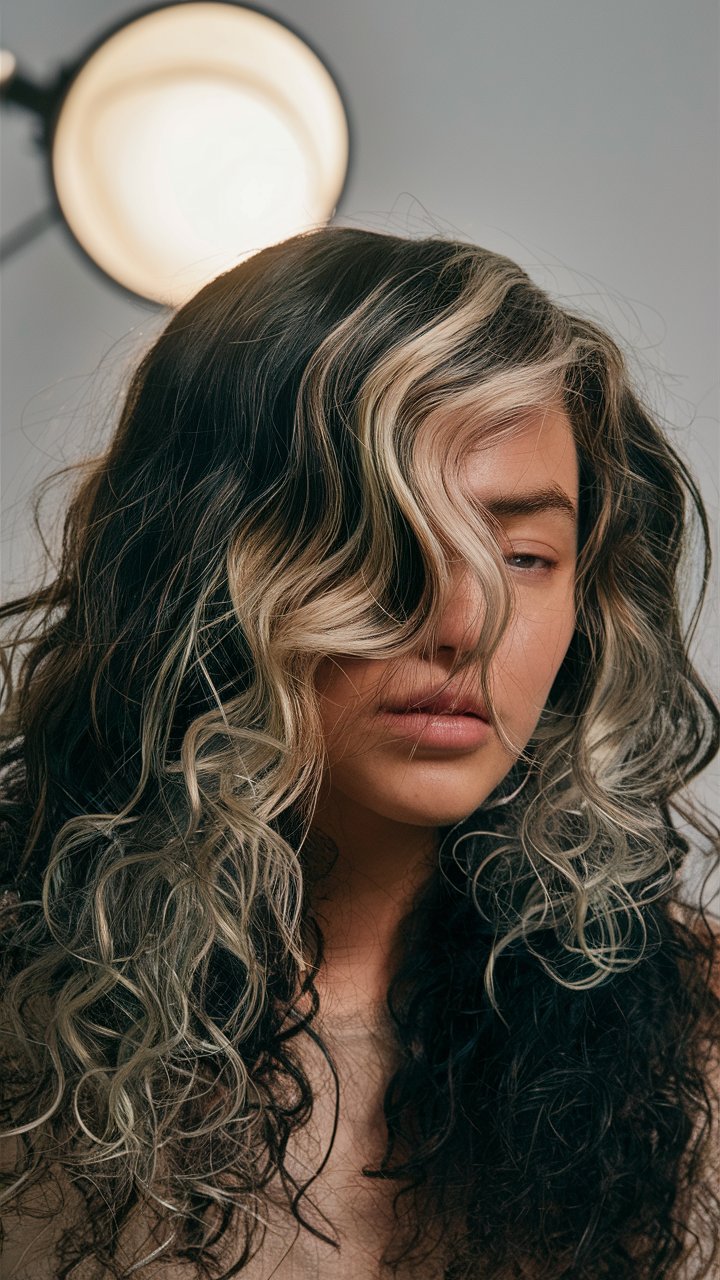Have you ever stood in front of the mirror, hairbrush in hand, wondering why your hair behaves the way it does? Why some days it lies flat and smooth, and on others it seems to have a personality of its own? The answer lies in your hair type—a vital factor that influences everything from your haircare routine to the styling products you use.
Understanding your hair type isn’t just a matter of vanity; it’s the foundation of healthy hair. When you know your texture, pattern, porosity, and density, you can unlock a personalized regimen that brings out the best in your natural strands. Whether you’re looking to reduce frizz, boost volume, or simply understand what makes your hair tick, this comprehensive guide will reveal everything you need to know.
Chapter 1: The Four Basic Hair Types

Hair types are generally classified into four broad categories: Type 1 (Straight), Type 2 (Wavy), Type 3 (Curly), and Type 4 (Coily or Kinky). These types are further broken down into subcategories like A, B, and C to indicate finer details such as tightness of curl or thickness of strands.
Type 1 – Straight Hair
- 1A: Very straight, fine, soft, and shiny. Difficult to curl and tends to be oily.
- 1B: Still straight but has more volume and body. Holds styles better than 1A.
- 1C: Straight with slight bends or waves and thicker strands. Resistant to styling but more textured.
Characteristics:
- Shiny due to the smooth surface reflecting light.
- Oil travels easily down the shaft, making it prone to greasiness.
- Tends to lack volume and holds styles less effectively.
Type 2 – Wavy Hair
- 2A: Loose, beachy waves with minimal frizz. Fine and easy to style.
- 2B: More defined S-shaped waves with some frizz. Medium thickness.
- 2C: Thick, coarse waves with frizz and some ringlets at the ends.
Characteristics:
- A hybrid between straight and curly.
- May get frizzy, especially in humid conditions.
- Benefits from lightweight, moisturizing products.
Type 3 – Curly Hair
- 3A: Loose, large curls that form perfect spirals. Has shine and body.
- 3B: Medium curls with more volume. Springy and defined.
- 3C: Tight, corkscrew curls with significant density and texture.
Characteristics:
- Prone to dryness as oils have trouble traveling down spiraled strands.
- Shrinkage is common.
- Requires hydrating and curl-enhancing products.
Type 4 – Coily or Kinky Hair
- 4A: Dense, springy coils with an S-pattern. Soft but fragile.
- 4B: Tighter Z-pattern coils that are fluffy and less defined.
- 4C: Tightly coiled with no defined pattern. Prone to shrinkage and breakage.
Characteristics:
- Most fragile and driest hair type.
- Requires deep moisturization and gentle handling.
- Highly versatile and can shrink up to 75% of its actual length.
Chapter 2: Beyond Curl Pattern – The Other Hair Characteristics
Identifying your hair type doesn’t stop at curls and coils. There are other important factors to consider for a complete understanding of your hair’s needs.
1. Hair Density
Density refers to how many hair strands you have on your scalp.
- Low Density: Sparse scalp visibility. Needs volumizing products.
- Medium Density: Balanced look. Can hold styles well.
- High Density: Thick and full appearance. May require detangling tools.
2. Hair Thickness
Often confused with density, thickness (or width) refers to the diameter of individual strands.
- Fine Hair: Thin and delicate strands. Gets weighed down easily.
- Medium Hair: Balanced strength and flexibility.
- Coarse Hair: Thick strands. Can withstand more heat but is prone to dryness.
3. Hair Porosity
Porosity measures your hair’s ability to absorb and retain moisture.
- Low Porosity: Tightly bound cuticle layer. Resistant to moisture and product absorption.
- Medium Porosity: Ideal balance. Moisture retention is good.
- High Porosity: Raised cuticles. Absorbs moisture quickly but loses it just as fast.
4. Hair Elasticity
Elasticity indicates how much your hair can stretch and return to its original shape.
- High Elasticity: Healthy and hydrated.
- Medium Elasticity: Moderate bounce.
- Low Elasticity: Brittle and prone to breakage.
Chapter 3: How to Determine Your Hair Type at Home

You don’t need a salon visit to understand your hair. Follow this DIY hair typing method to analyze your texture:
Step 1: Wash and Air-Dry
- Use a sulfate-free shampoo.
- Skip styling products.
- Let your hair dry naturally.
Step 2: Examine Your Strands
- Check curl pattern: Are they straight, wavy, curly, or coily?
- Pull a strand to feel thickness.
- Gently stretch a curl to measure elasticity.
- Observe how it soaks up water to test porosity.
Step 3: Use a Hair Type Chart
Match your observations to a professional hair typing chart (Types 1A through 4C) for better classification.
Chapter 4: Tailoring Haircare to Your Hair Type
Now that you know your hair type, it’s time to customize your haircare routine for optimal results.
For Straight Hair (Type 1)
- Use volumizing shampoos to add body.
- Avoid heavy oils and butters.
- Dry shampoo helps manage oiliness.
- Lightweight serums add shine without greasiness.
For Wavy Hair (Type 2)
- Sulfate-free shampoos prevent dryness.
- Use mousse or sea salt spray for texture.
- Avoid heavy products that weigh down waves.
- Diffuser drying enhances natural shape.
For Curly Hair (Type 3)
- Use co-washing to prevent stripping natural oils.
- Apply leave-in conditioners and curl creams.
- Avoid brushing dry hair to prevent frizz.
- Use microfiber towels or T-shirts for drying.
For Coily Hair (Type 4)
- Follow the LOC method (Liquid, Oil, Cream) for moisture retention.
- Use protective styles to reduce manipulation.
- Avoid heat styling and harsh brushing.
- Deep condition weekly.
Chapter 5: Common Hair Type Myths Debunked

Myth 1: Curly hair is always dry
✅ Truth: With proper care and moisture-sealing products, curls can stay hydrated and soft.
Myth 2: Straight hair doesn’t need conditioner
✅ Truth: Every hair type needs conditioning, but formulas should be tailored to avoid oil buildup.
Myth 3: All Type 4 hair is the same
✅ Truth: Type 4 has three unique subtypes, each requiring a different level of care and handling.
Myth 4: Porosity doesn’t matter
✅ Truth: Porosity affects how your hair absorbs products, reacts to treatments, and retains moisture.
Chapter 6: Embracing Your Natural Texture
Your hair is a reflection of your individuality. Embracing your hair type isn’t just about beauty; it’s about self-love and acceptance. Here’s how to celebrate your natural hair:
- Avoid chemical treatments that alter natural texture unless necessary.
- Educate yourself on ingredients that benefit your hair type.
- Join communities online or locally to share tips and support.
- Use affirmations and wear your hair with pride, no matter the texture.
Chapter 7: Hair Type Quiz (Quick Self-Assessment)
1. How does your hair dry naturally?
- Flat and shiny ➝ Type 1
- Slight S-pattern ➝ Type 2
- Spirals or corkscrews ➝ Type 3
- Tight coils ➝ Type 4
2. How thick is one strand of your hair?
- Thin and light ➝ Fine
- Average feel ➝ Medium
- Feels stiff ➝ Coarse
3. Does your hair soak up water easily?
- Water beads on it ➝ Low porosity
- Sinks slowly ➝ Medium porosity
- Sinks instantly ➝ High porosity
4. Can you stretch a hair strand and it bounces back?
- Yes ➝ High elasticity
- Somewhat ➝ Medium
- Breaks easily ➝ Low elasticity
Conclusion: Know It. Love It. Care For It.
Your hair type is more than just a label—it’s a roadmap to the healthiest, most beautiful version of your hair. Whether you’re rocking Type 1A sleekness, Type 2C waves, Type 3B curls, or Type 4C coils, embracing your natural texture leads to greater confidence and self-expression.
Invest in products that serve your strands. Build a routine that respects your hair’s unique needs. And remember: no one else has hair exactly like yours—that’s your power.


